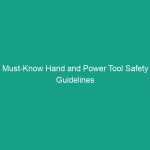Introduction
Good morning team! Today, we’re going to discuss an important topic that affects not only our workplace but also our health and Safety outside of work: rabies Prevention. Rabies is a viral disease that can be fatal, but it is also preventable with the right knowledge and actions. Understanding how to prevent rabies is crucial for your Safety and the safety of those around you.
Understanding Rabies and Its Importance
Rabies is a viral infection that primarily affects mammals, including humans. This disease is transmitted through the saliva of an infected animal, typically through bites. In the United States, rabies is most commonly found in wild animals such as bats, raccoons, and foxes. Understanding the nature of rabies is vital for Workplace Safety and personal health, especially if your job involves outdoor activities or working with animals.
Many people mistakenly believe that rabies is no longer a concern due to vaccination programs and controlled environments. However, rabies remains a significant threat, particularly in certain areas and among specific animal populations. It’s essential to recognize that even a minor exposure can lead to severe health consequences if not addressed immediately.
Key Hazards, Risks, and Safety Considerations
There are several key Hazards associated with rabies that we need to be aware of:
- Animal Encounters: Employees working in outdoor settings or handling animals are at greater risk of coming into contact with rabid animals.
- Exposure to Wildlife: Bats and raccoons are common carriers of rabies, and encounters can happen unexpectedly.
- Lack of Awareness: Not recognizing the signs of rabies in animals can lead to dangerous situations.
Ignoring these hazards can result in serious consequences, including potential exposure to rabies, which can be fatal if not treated promptly. It’s critical to take these risks seriously and follow established safety protocols.
Best Practices, Procedures, & Actionable Advice
1. Be Aware of Your Surroundings
Stay vigilant when working outdoors or in environments where wildlife may be present. Familiarize yourself with local animal species and their behaviors. If you notice an animal acting strangely—such as being overly aggressive or disoriented—keep your distance and report it immediately.
2. Vaccination for Pets
If you have pets, ensure they are vaccinated against rabies. This is crucial not just for their protection, but also for the safety of everyone they may come into contact with. Regular vaccination can significantly reduce the risk of rabies transmission.
3. Avoid Contact with Wild Animals
Do not approach or attempt to handle wild animals. If you encounter a wild animal, it’s best to observe from a safe distance and avoid any interaction. Always report wild animal sightings to local wildlife control.
4. Immediate Action After Exposure
If you are bitten or scratched by an animal that may have rabies, wash the wound immediately with soap and water for at least 15 minutes. Seek medical attention as soon as possible. Rabies post-exposure prophylaxis (PEP) is highly effective if administered promptly.
5. Educate Yourself and Others
Participate in safety Training sessions and share information about rabies prevention with your coworkers. The more we know, the safer we will be. Encourage open discussions about safety practices and share personal experiences related to wildlife encounters.
Regulations, Standards, and Compliance
Understanding the Regulations surrounding rabies prevention is crucial for compliance and safety. Organizations such as OSHA (Occupational Safety and Health Administration) provide guidelines on handling animals and exposure risks. Compliance with these regulations not only protects employees but also ensures that the workplace adheres to safety Standards. Failure to comply can lead to serious repercussions for both individuals and the organization.
Employee Engagement & Discussion
Let’s open the floor for discussion. What safety challenges have you encountered related to rabies? Have you ever had an experience with a wild animal that made you rethink safety protocols? Sharing these experiences can help us all stay vigilant and prepared.
Conclusion & Key Takeaways
In summary, preventing rabies is a shared responsibility that requires awareness, proactive measures, and compliance with safety regulations. Remember these key points:
- Be aware of your surroundings and potential wildlife hazards.
- Ensure pets are vaccinated and avoid contact with wild animals.
- Take immediate action if exposed to an animal that may have rabies.
- Educate yourself and others about rabies prevention strategies.
Thank you for your attention and commitment to safety. By prioritizing these practices, we can create a safer workplace for everyone. Stay safe out there!


